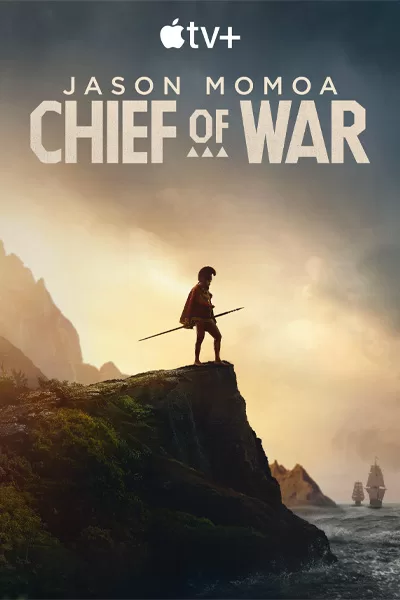
- Starring
- Jason Momoa, Luciane Buchanan
- Creators
- Jason Momoa, Thomas Pa'a Sibbett
- Rating
- TV-MA
- Genre
- Drama, History
- Release date
- Aug 1, 2025
- Where to watch
- AppleTV
Overall Score
Rating Overview
Rating Summary
In the late 18th century, the Hawaiian Islands are divided among four warring kingdoms: Hawaiʻi, Maui, Oʻahu, and Kauaʻi. Kaʻiana, a fierce warrior from Maui, returns to his homeland after years of self-imposed isolation and is drawn into a brutal campaign to unify the islands under King Kamehameha I. As he navigates tribal rivalries and sacred traditions, he grapples with his loyalty and the cost of uniting his people to protect their way of life, all while Western exploration and colonization begin to influence the region (you’re welcome).
Chief of War Review (S1:E1-2)
The first two episodes of Chief of War are mostly table-setting: introducing the characters and laying out the central plot. They get the job done, but the personal drama and political maneuvering are so familiar you could trim half the runtime without losing a thing. We’ve all sat through this story before—no need to have it ladled into our laps scene by scene.
The fact that it’s staged in a time and place rarely explored on screen (outside of Moana, anyway) feels less like bold storytelling and more like window dressing to make an old formula look fresh.
Here, the formula is a reluctant, retired warrior lured back into battle under false pretenses—only to be betrayed and swear revenge… at least so far. Episode 2 leaves off with a cliffhanger that hints at better things to come, but until then, it’s hard not to find your attention wandering. And even if your eyes drift to your phone for entire stretches, you’ll track the plot without missing a beat (even though 99% of the dialogue requires subtitles)—because the beats are the same ones countless other shows and movies have marched to.
WOKE REPORT
Grok Says…
- I’m no expert on ancient Hawaiian societies. So, I asked Grok and ChatGPT a few questions to help with this section (take that for what it’s worth). According to both…
- Women were occasionally warriors and fought alongside men infrequently. Those who were trained to fight were always noble. Otherwise, women had more traditional roles: mothering, nurturing the young, etc. They also worked in the fields as laborers.
- Men were encouraged to be emotional, including crying.
- Noble women were routinely married off to strengthen political ties.
Puna Tang
- There are a couple of large battle set pieces, and each features an absurd number of female warriors. While many of them fire rocks from slings and therefore don’t engage in hand-to-hand, the one or two who do (the ones who are more than extras) are equally matched against some very large and muscular men.
- One of the subplots involves a strong, independent noble woman who doesn’t want to be married off for political reasons. So far, they haven’t spent much time on it, but it’s just so lazy and clichéd.
Uē
- There are two scenes that feature a male warrior crying. One of them shows Jason Momoa’s Kaʻiana saddened by being tricked into an unnecessary slaughter. It wouldn’t be so bad, considering the information I gathered from Grok and ChatGPT, but the women are never shown crying. In this particular scene, Momoa’s warrior wife remains stoic and calm, settling him down. It’s a silly role reversal that doesn’t fit and needlessly ruins the scene’s impact.
James Carrick
James Carrick is a passionate film enthusiast with a degree in theater and philosophy. James approaches dramatic criticism from a philosophic foundation grounded in aesthetics and ethics, offering insight and analysis that reveals layers of cinematic narrative with a touch of irreverence and a dash of snark.


One comment
[email protected]
September 13, 2025 at 7:59 pm
Gay fighters by 3rd episode Maui chiefs son. Ridiculous. Turned it off. Don’t he fooled it’s woke!!!